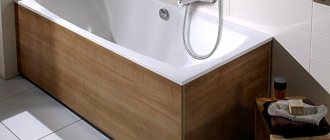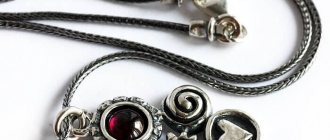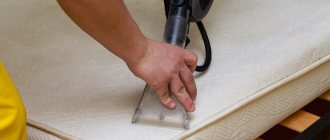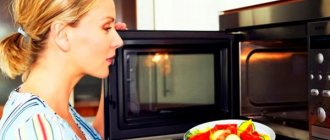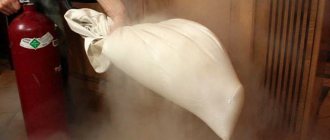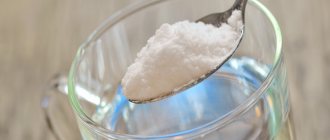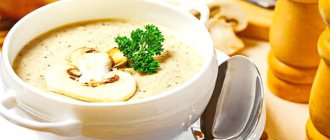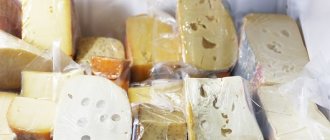Baking soda is an excellent leavening agent that is most often used to make dough. But don't underestimate her!
It is also a universal folk remedy for cleaning. They wash and clean almost everything. It is safe for health, does not cause allergies, leaves no odor, is cheap and perfectly cleans a wide variety of contaminants.
Our selection of 22 ways to use it will prove this. Just stock up on a couple of packages - and any old dirt will not be scary for you.
Pipe cleaning
Sewage pipes require systematic cleaning, as they become contaminated with residues of pulp and detergents, hair and other debris. It is important not to wait for persistent blockages, but to clean them as part of prevention. To remove light blockages, you can use soda and vinegar without worrying about the condition of the pipes, since the composition is completely safe and non-aggressive.
Step-by-step instruction:
- Remove standing water in the sink using a plunger.
- Heat 130 ml of 9% vinegar to a temperature of 40–50 ℃.
- Pour a whole pack of soda down the drain.
- Pour heated vinegar into the soda.
- Do not use the sink for about 40 minutes: the taps must be screwed down and do not fill with water. Leave alone to react.
- Boil 5 liters of water and after the end of the soak, pour 5 liters of boiling water into the sink to dissolve the cork.
- If necessary, the process can be repeated.
How to clean with only soda?
Dry baking soda powder is an excellent abrasive for cleaning baking sheets, pan racks, pots and other kitchen utensils.
It is enough to apply a small amount of dry powder to the contaminated areas, wipe the surface with a sponge soaked in water, and then rinse under running water.
Cleaning with dry soda does an excellent job of removing traces of grease, burnt food, and soot , but there is one drawback - the powder leaves scratches.
For more delicate cleaning of glass, ceramic dishes, and items with a glossy surface, soda is diluted with warm water (the consistency of the mixture should resemble thick sour cream). The resulting paste is rubbed onto the contaminated areas, and then washed off under running water.
Soda as an independent product is an excellent tool for combating fat, soot, and carbon deposits.
But if necessary (ingrained dirt cannot be removed the first time), additional ingredients will help enhance the cleaning effect .
It is strictly forbidden to use soda (in any form) to clean Teflon-coated dishes and aluminum products.
Table vinegar: a remedy for limescale and mold
Table vinegar contains acetic acid, which is produced by the oxidation of ethyl alcohol and other alcohol-containing products by acetic acid bacteria. The pH value of 9% vinegar is 2.4.
Properties of vinegar:
► Acetic acid breaks down mineral stains - rust and limescale
► Acetic acid has disinfectant properties. Table vinegar 9% in 30 minutes can destroy mold spores and many types of bacteria, including Mycobacterium tuberculosis.
Note: the characteristic vinegar smell disappears when, as a result of an oxidative reaction, vinegar splits into water and carbon dioxide. You can neutralize the strong “aroma”: add 20 drops of essential oil and the zest of three citrus fruits (lemons, oranges) to the vinegar and let the mixture brew for a week.
Read the blog: “FAQ on cleaning products: how to remove limescale and rust in an apartment.”
What can be cleaned with table vinegar?
Table vinegar can be used either undiluted or with water in a weaker concentration.
What can be done with undiluted vinegar 9%:
♦ Wrap a piece of cloth soaked in vinegar around the “leg” of the sink or sink faucet, around which limescale has formed. Wait 15 minutes and remove dirt with a sponge.
♦ Soak a sponge in vinegar and wipe down the sides of the refrigerator to kill mold spores.
♦ Add half a cup of vinegar to the softener compartment before washing to increase the effectiveness of your laundry detergent, protect colors from fading, prevent soap scum, and soften fabrics.
What can be done using vinegar diluted in water in a ratio of 1 to 1:
♦ Spray the vinegar solution from a spray bottle onto the walls of the shower stall and the tiles in the bathroom. After 20 minutes, clean the plaque with a sponge.
♦ Use a vinegar solution instead of store-bought glass cleaner to clean your windows without streaks.
♦ Pour warm vinegar into the kettle and boil after an hour to remove the limescale.
Baking soda in tandem with vinegar copes with blockages and stubborn stains:
♦ To remove a clog, pour 2 tablespoons of baking soda and salt into the sink drain. Then slowly pour in 100 ml of warm table 9% vinegar, and then pour 5 liters of boiling water from the kettle in a thin stream.
♦ Lubricate the carbon deposits in the oven or on the stove with “gruel” and soda and water, and after 1 hour spray with 9% vinegar from a spray bottle.
Read the blog: “Saving a sofa: how to remove the persistent smell of urine from the upholstery and filling,”
React Like Love Haha Wow Sadness Angry
1
Eco-friendly and cheap
When using soda or solutions, you should wear gloves; the alkaline properties of soda mixed with vinegar can harm the skin. People with sensitive skin should use soda with caution; the alkali contained in soda greatly dries the skin, and this can weaken barter functions and water balance.
Baking soda can cope with many types of contaminants, both in pure and dissolved form. This is an extremely useful assistant in household matters. Baking soda is indispensable for allergic reactions to detergents; it will significantly improve the quality of life for such people.
Application for boiling
One of the methods to quickly restore the radiance and shine of fried pans is boiling with soda.
Algorithm of actions:
- Place the largest saucepan or basin on the stove (the frying pan should fit completely), fill the container with hot water.
- Add soda ash to the pan at the rate of 70 g per liter, bring the water to a boil.
- Place a dirty frying pan in boiling water and leave to simmer over low heat for at least one hour.
- Remove the pan from the stove, after the water has cooled, take out the boiled dishes.
During boiling, all the fat will come off the walls of the frying pan, and all that remains to be done is to rinse it under running water.
Is it possible to wash dishes with sodium bicarbonate?
Sodium bicarbonate (in simple terms - “soda”) is a fine-grained snow-white powder, which, in addition to culinary arts, is actively used for household needs.
This is an excellent disinfectant that removes grease and old stains. As a stand-alone product or in combination with soap, mustard, glue and other substances, soda will help restore cleanliness and freshness to kitchen surfaces, household appliances, and dishes.
Unlike aggressive chemicals, soda is absolutely harmless to human health .
On store shelves you can see two types: food and calcined. Which one is suitable for washing dishes? Answer: Both options are suitable. The only difference is the effectiveness of the powder.
In practice, baking soda is most often used. It cannot be called the most effective in the fight against fat, carbon deposits and soot, but since baking soda is also used in cooking, it takes first place in the popularity rating.
In second place in terms of frequency of use is soda ash. And this is an unjustifiably low position, since it is the one that copes best with old stains of grease, soot and scale. Soda ash can easily clean those surfaces that other products could not cope with.
